
Bulls Joins TVO's Global Business Development Team
like Bulls to the team is essential to meeting evolving industry needs. “Having the right people in place to interface with companies that are contending with technical and operational challenges positions us to better serve the global industry and underscores our commitment to offshore oil and gas development,” Chell says
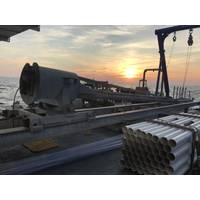
GOM Geotechnical Coring Program Completed for NOAA OER Expedition
data to help answer questions about areas of the continental shelf that were once exposed as dry land.Throughout time, global sea level has risen and fallen, alternately covering and exposing the land. Today, the Gulf of Mexico is largely known for its shrimping, fishing, and extensive offshore oil and gas development, but evidence of the earliest Gulf coast inhabitants could be preserved, buried under sediment and sea. But on a continental shelf where approximately 40 million acres could have been dry land in the last 12,000 years, where do you start looking?”The NOAA Office of Ocean Exploration
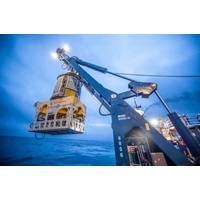
TechnipFMC to Split into Two Companies
Technip merged with rival FMC Technologies, creating a leading London-based offshore services company with combined revenue of $20 billion. That deal closed near the nadir of an oil-price crash, when U.S. crude futures fell to about $26 a barrel and prompted cutbacks in spending on new offshore oil and gas development projects.Shares of TechnipFMC rose more than 6% before paring gains to 4.3% shortly before the close.Company names after the spin-off were not disclosed.Although the 2017 Technip-FMC Technologies merger was successful, Chief Executive Doug Pferdehirt said the spin-off would improve flexibility

Saipem to Establish US Spool-base
Saipem announced on Monday it will establish a "highly specialized" spool-base on Greenwood Island, Pascagoula, Miss. designed to provide support for vessels performing pipelay activities for offshore oil and gas development projects in the Gulf of Mexico.The new spool-base will support the Saipem Constellation, the latest addition to the Saipem fleet, suitable for the installation of rigid and flexible pipes in ultra deep waters as well as for heavy lifts of up to 3,000 tons, the company said.Under a Long Term Agreement, the Saipem spool-base is in a dedicated area within the facilities of
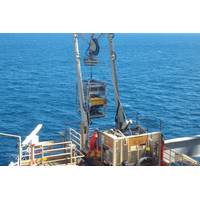
ROV Innovation Saves Millions for Woodside
An innovative use of remotely operated underwater vehicle (ROV) technology for subsea jacket inspections at Australia’s largest oil and gas development has demonstrated substantial cost reductions and operational improvements.In March this year Fugro began a nine-month inspection campaign of Woodside’s offshore facilities on the Australian North West Shelf. Fugro said its novel platform deployed ROV (PDROV) for subsea jacket inspections was able to help Woodside reduce costs by around AUD 10 million per inspection cycle.“Very early in the project we identified an alternative to
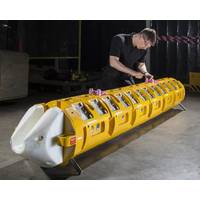
Subsea Infrastructure: Challenges & Solutions
; Full scale qualification testing is another critical challenge in subsea infrastructure design and fast track engineering solutions. This can be exemplified in another RED Engineering project to design tether clamps for the installation in the Gulf of Mexico, the world’s deepest offshore oil and gas development to date. The requirement for the tether clamp was driven by the need to securely fasten a fragile and compressible control umbilical to the seabed in over 2,900m of water for the lifetime of the development. Several difficult challenges that had to be overcome if the success was
US Sets Gulf of Mexico O&G Lease Auction for March
The U.S. Interior Department said it will hold its largest offshore auction to date, nearly 77 million acres, to energy companies in March 2018 to conduct oil and gas development. The proposed lease of offshore Texas, Louisiana, Mississippi, Alabama and Florida blocks continues U.S. President Donald J. Trump's efforts to encourage domestic energy production despite relatively low oil prices, the department said. The proposed lease sale includes 14,375 blocks that are located from three to 230 miles offshore in the Gulf's Western, Central and Eastern sectors in water depths ranging
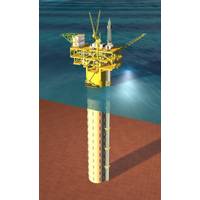
Wison Launches Buoyant Tower Solutions with Storage
Wison Offshore & Marine has developed a new Buoyant Tower solution with condensate or oil storage, adopting Wison’s proprietary Buoyant Tower technology. This floating concept provides a new economic and reliable option for the oil and gas development in the shallow to medium-depth waters. Originally invented by Ed Horton and Lyle Finn, the Buoyant Tower technology was first applied to BPZ CX-15 project offshore Peru when both Ed and Lyle worked for Horton Wison Deepwater Inc. (HWD), now renamed as Wison Offshore Technology Inc. with 130+ patents originated by Ed Horton and his
Brexit: What’s in Store for the Subsea Sector?
and a more attractive investment climate to be created. Boyde stresses, “The other really big one for the UK subsea industry is that Brexit could potentially lead to a breakup of the UK. Then a big hit, which happened at the last referendum, is that people will put a North Sea oil and gas development spending on hold for a while until they know the nature of the settlement. Particularly, given oil and gas prices, a lot of investments are now even more marginal. I think having the double whammy of a low oil price and further financial uncertainty around projects, whilst the UK is haggling

 December 2025
December 2025





